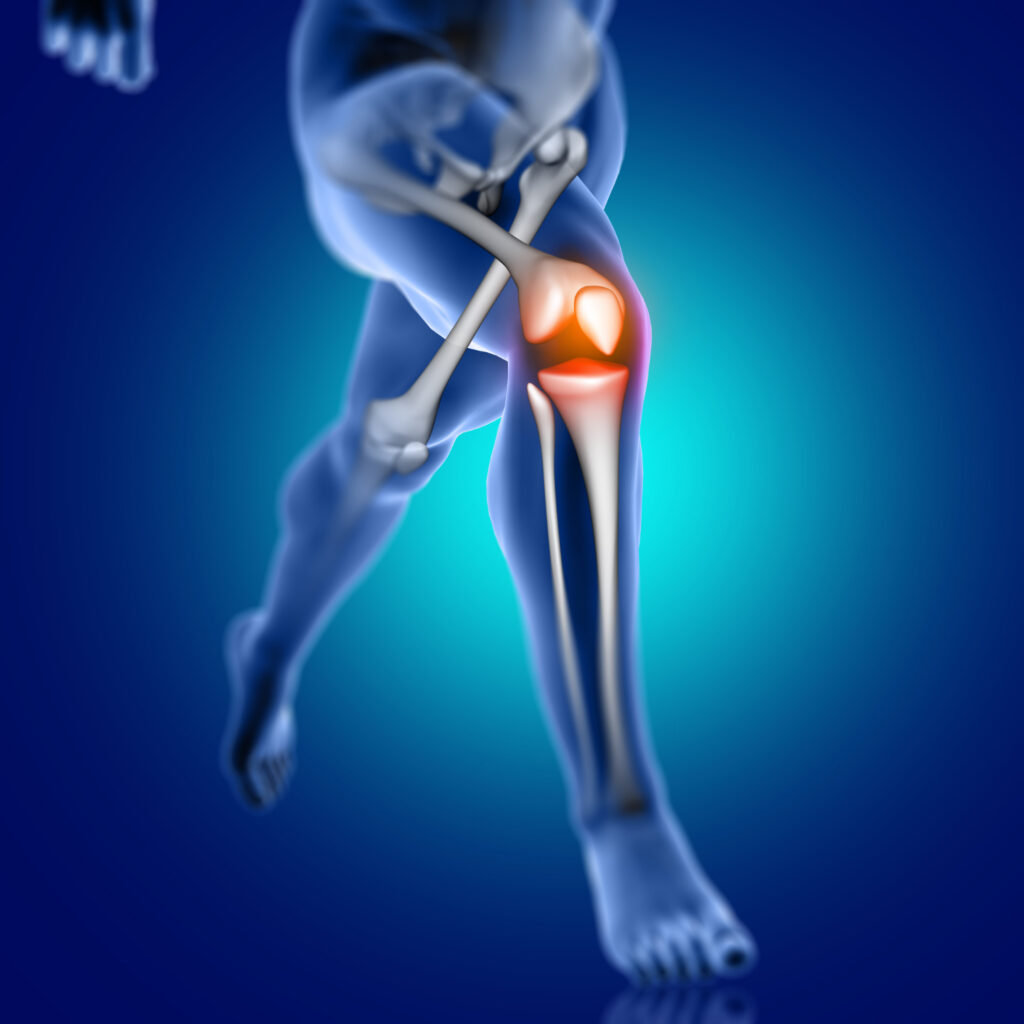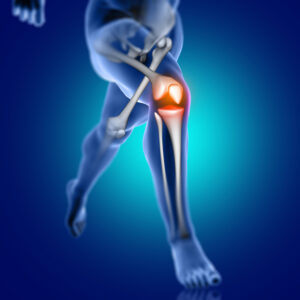Everything You Need to Know About Partial Knee Replacement

Partial Knee Replacement
Thinking about knee replacement surgery but worried about replacing the whole knee? Take a look with the Best Knee Replacement Surgeon, Dr. Preetesh Choudhary at it! It just swaps out the damaged part, keeping the rest of your knee safe.
Overview
What is Partial Knee Replacement?
Partial knee replacement is a modern technique that isn’t widely known by many people.
many people.
It’s a type of joint replacement surgery (arthroplasty). It is also known as unicompartmental knee replacement.
Surgeons perform Unicondylar Knee Replacement (UKA), Partial Knee Replacement (Partial RTK), or Microplasty to help restore knee movement and stability. It is also known as “Mini-knee“.
During the partial knee replacement surgery, the healthy parts of the knee joint are untouched by the Knee replacement surgeon and the damaged sections of your knee joint are removed and replaced with a metal and plastic prosthesis.
Your knee joint has three compartments:
- The medial compartment (inside section)
- The lateral compartment (outside section)
- The patellofemoral compartment (under your kneecap)
Surgeons usually perform Partial RTK on the medial and lateral compartments.
Types of Partial Knee Replacement
- Unicondylar knee replacement is a surgery where only one damaged part of the knee, either the inside (medial) or outside (lateral) section, is replaced.
- Patellofemoral knee replacement is a surgery that replaces the worn-out kneecap and the groove at the end of the thigh bone.
- Bicompartmental knee replacement is a surgery that replaces two parts of the knee: the inside section (medial) and the area under the kneecap (patellofemoral).
What conditions are treated with partial knee replacement?
Conditions treated with Partial RTK or unicompartmental knee replacement include:
- Osteoarthritis that affects only a part of the knee.
- Rheumatoid arthritis that is limited to one section of the knee.
- Post-traumatic arthritis affects one area of the knee.
- Avascular necrosis affecting a specific part of the knee joint.
- Damage to the knee due to injury confined to one compartment.
- Stiffness in knee joint
- Joint pain
Procedure Details
How should one prepare for a partial knee replacement?
Your knee replacement surgeon will guide you on how to get ready for surgery. Generally, you’ll need:
- A physical exam to ensure you’re healthy enough for the procedure.
- Blood tests.
- An electrocardiogram (ECG) to check your heart.
- Imaging tests, usually a knee X-ray. Sometimes, you may also need an MRI or CT scan.
What happens during the replacement surgery?
On the day of unicompartmental knee replacement surgery, you’ll get anesthesia so you don’t feel any pain. An anesthesiologist will either give you general anesthesia to put you to sleep or regional anesthesia to numb you from the waist down.
During the surgery, your surgeon will:
- Remove the damaged cartilage and bone in the sections being replaced.
- Insert the artificial pieces.
- Place a plastic spacer to mimic the smooth cushion of your original cartilage.
Advantages & Disadvantages:
Advantages of Partial Knee Replacement
For patients eligible for Partial RTK, several key advantages compared to total knee replacement:
- Partial knee replacement preserves 75% of your knee joint- Means maximum part of your knee joint is untouched by surgeon.
- Day Care Knee Replacement
- Shorter procedure- It takes less time compared to other Total Knee Replacement.
- Less blood loss.
- Reduced pain due to the smaller surgery.
- Less invasive surgery.
- Faster recovery, taking about half the time of total knee replacement because the surgery is simpler and there is less post-surgery pain.
- Faster return to daily activities like tennis or golf.
- Quicker return to work, with desk job workers able to return in two weeks.
Disadvantages of Partial Knee Replacement Surgery
As with any surgery, there are risks with partial knee replacement also. Your knee replacement surgeon will explain these risks and take steps to prevent complications.
- Limited Use: Partial Knee Replacement surgery is only for patients with damage in one part of the knee.
- Possible Future Surgery: If arthritis spreads, a total knee replacement might be needed later.
- Shorter Lifespan: The artificial parts may not last as long as those in a total knee replacement.
- Incomplete Pain Relief: Might not fully relieve pain if other knee areas are also affected.
- Technical Challenge: The procedure requires precision to fit the prosthetic correctly.
- Possible Risks: Includes risks like infection, blood clots, and injury to nerves or blood vessels.
- Blood clots: These can form in the veins of the legs or pelvis after surgery. Your doctor may prescribe blood thinner.
- Infection: This can occur at the wound site or deeper. Infections can happen days to years after surgery. You will receive antibiotics before and for about 24 hours after the surgery to prevent infection.
- Injury to nerves or blood vessels: This is rare but can happen during the procedure.
- Continued pain
- Risks of anesthesia
- Need for additional surgery
Contraindications of Partial RTK
Partial RTK, also known as unicompartmental knee replacement, is a surgical procedure that is suitable for patients with osteoarthritis confined to a single compartment of the knee. However, it is not appropriate for everyone. There are several contraindications for this surgery:
- Mental or Neuromuscular Disorders: Conditions that impair the ability to comply with post-operative care and rehabilitation can also contraindicate this surgery.
- Inflammatory Arthritis: Conditions like rheumatoid arthritis, which affect the entire joint, are not suitable for partial knee replacement.
- Ligament Damage: The anterior cruciate ligament (ACL) and other ligaments need to be intact for the procedure. A history of ligament tears, especially of the ACL, is typically a contraindication.
- Significant Knee Stiffness: Limited range of motion or significant stiffness in the knee can disqualify a patient, as it may indicate more widespread joint issues.
- Severe Instability: If the knee is too unstable, partial replacement may not provide sufficient support and stability.
- Excessive Weight: High body weight can increase the risk of implant failure and complications, making the procedure unsuitable for some individuals.
- Infections: Active or recent infections in the knee or elsewhere in the body can lead to complications during and after the surgery.
These contraindications help ensure that only suitable candidates undergo partial knee replacement, thereby increasing the chances of successful outcomes and minimizing complications. If you have any of these conditions, it’s crucial to discuss alternative treatment options with your Knee replacement surgeon.
Pain management after microplasty
Microplasty is a term commonly used in orthopedic surgery to refer to a minimally invasive technique for performing unicompartmental knee arthroplasty (UKA), also known as partial knee replacement.
Your Recovery Plan
Your knee replacement surgeon, will create a personalized plan for your recovery. Here are some general guidelines:
- Ice Your Knee: Apply ice for 20 minutes several times a day to reduce pain and swelling.
- Elevate Your Knee: Keep your knee raised above your heart whenever possible. You can use cushions or pillows while lying down or a footstool while sitting.
- Care for Your Incision: Follow your surgeon’s instructions for cleaning and dressing your incision. Ask when to change the dressing and when it’s safe to shower or bathe.
- Home Exercises: Start exercises recommended by your surgeon as soon as possible. These will help strengthen your knee muscles and prevent stiffness. Follow your surgeon’s instructions on frequency.
- Physical Therapy: You’ll work with a physical therapist for several weeks. They’ll guide you in safe movements, including bending and putting weight on your knee.
- Don’t put too much weight on your knee. Use crutches or a walker when you walk to avoid putting too much pressure on it.
- Eat healthy foods to help your body heal and keep a good weight. If you smoke, try to quit, as smoking can slow down healing. Drink enough water and get plenty of rest to recover well.
- Stay away from activities that could hurt your knee, like running or jumping, to protect the new implant.
How much time does it take to recover from a partial knee replacement?
Your recovery time from Partial RTK surgery will depend on:
- Your activity level before surgery
- Your age.
- Any other health conditions you have.
The full recovery time from a partial knee replacement surgery varies for each person, but generally, it can take a few weeks to return to regular activities.
A message from Dr. Preetesh Choudhary:
Dealing with knee pain and stiffness can be bothersome and upsetting. If you’ve been struggling with these issues for a long time and other treatments haven’t helped much, a partial knee replacement might be the solution to help you move around more comfortably. Discuss with Dr. Preetesh Choudhary, The Best Knee Replacement Surgeon at MLs Clinic, Indore to figure out the best treatment for you, what to expect, and when surgery might be a good option. He will guide you through preparing for surgery and ensure you recover as quickly and safely as possible.






